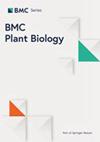镉胁迫对甘薯生长和生理特性的影响
IF 4.3
2区 生物学
Q1 PLANT SCIENCES
引用次数: 0
摘要
本研究通过盆栽实验评估了甘薯对镉(Cd)胁迫的反应,从理论上证实了甘薯在镉污染农田中的综合应用。实验包括一个 CK 处理和三个镉胁迫处理,镉浓度分别为 3、30 和 150 mg/kg。我们分析了甘薯在不同生长期的具体指标,如植株的个体生长、光合作用、抗氧化能力和碳水化合物镉积累分布。在此基础上,探讨了整个生长周期中植物碳代谢对镉胁迫的响应特征。结果表明,T2和T3处理抑制了甘薯的藤蔓生长、叶面积扩大、茎径伸长和块根生长;特别是T3处理显著增加了甘薯的分枝数。在镉胁迫下,甘薯叶绿素的合成明显受到抑制,Rubisco 活性显著降低。随着 Cd 浓度的增加,PS II 的功能也受到影响。在低镉浓度处理中,可溶性糖含量没有明显变化。相反,在高浓度镉处理中,可溶性糖含量明显下降。此外,随着镉浓度的增加,块根淀粉含量也明显下降。在整个植物生长过程中,过氧化氢酶、过氧化物酶和超氧化物歧化酶的活性水平在 T2 和 T3 处理中都有明显提高。相比之下,T1 处理的超氧化物歧化酶活性明显低于 CK 处理。随着镉施用量的增加,镉在甘薯各器官中的积累量也相应增加。吸收根的生物富集因子最高,而块根的生物富集因子和镉积累量较低。此外,从茎到叶柄的转移因子是马铃薯器官中最高的。这些结果表明,甘薯对镉有较高的耐受性,对镉污染农田有修复潜力。本文章由计算机程序翻译,如有差异,请以英文原文为准。
Effects of cadmium stress on the growth and physiological characteristics of sweet potato
This study evaluated the responses of sweet potatoes to Cadmium (Cd) stress through pot experiments to theoretically substantiate their comprehensive applications in Cd-polluted agricultural land. The experiments included a CK treatment and three Cd stress treatments with 3, 30, and 150 mg/kg concentrations, respectively. We analyzed specified indicators of sweet potato at different growth periods, such as the individual plant growth, photosynthesis, antioxidant capacity, and carbohydrate Cd accumulation distribution. On this basis, the characteristics of the plant carbon metabolism in response to Cd stress throughout the growth cycle were explored. The results showed that T2 and T3 treatments inhibited the vine growth, leaf area expansion, stem diameter elongation, and tuberous root growth of sweet potato; notably, T3 treatment significantly increased the number of sweet potato branches. Under Cd stress, the synthesis of chlorophyll in sweet potato was significantly suppressed, and the Rubisco activity experienced significant reductions. With the increasing Cd concentration, the function of PS II was also affected. The soluble sugar content underwent no significant change in low Cd concentration treatments. In contrast, it decreased significantly under high Cd concentrations. Additionally, the tuberous root starch content decreased significantly with the increase in Cd concentration. Throughout the plant growth, the activity levels of catalase, peroxidase, and superoxide dismutase increased significantly in T2 and T3 treatments. By comparison, the superoxide dismutase activity in T1 treatment was significantly lower than that of CK. With the increasing application of Cd, its accumulation accordingly increased in various sweet potato organs. The the highest bioconcentration factor was detected in absorbing roots, while the tuberous roots had a lower bioconcentration factor and Cd accumulation. Moreover, the transfer factor from stem to petiole was the highest of the potato organs. These results demonstrated that sweet potatoes had a high Cd tolerance and a restoration potential for Cd-contaminated farmland.
求助全文
通过发布文献求助,成功后即可免费获取论文全文。
去求助
来源期刊

BMC Plant Biology
生物-植物科学
CiteScore
8.40
自引率
3.80%
发文量
539
审稿时长
3.8 months
期刊介绍:
BMC Plant Biology is an open access, peer-reviewed journal that considers articles on all aspects of plant biology, including molecular, cellular, tissue, organ and whole organism research.
 求助内容:
求助内容: 应助结果提醒方式:
应助结果提醒方式:


